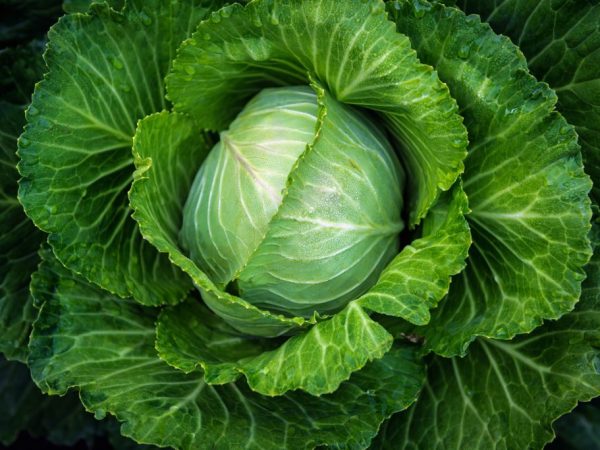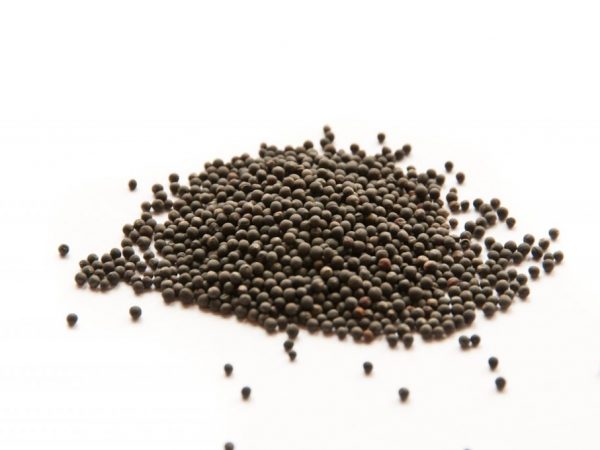Characteristics of the cabbage variety Sugar crunch
Cabbage Sugar crunch is an early variety of white cabbage, rich in microelements.

Characteristics of the cabbage variety Sugar crunch
Characteristic
Sugar crunch - early ripe white cabbage. According to the description, the ripening period from germination to harvest is up to 105 days. She has one hundred percent germination. Productivity from 1 sq. m is 2.3-3.7 kg. It has wonderful taste: sweet, juicy and crunchy, rich in useful substances: vitamins A, B, C, K, PP, U, as well as potassium, magnesium, calcium, zinc, manganese, sulfur, iodine, iron, phosphorus.
The described variety of cabbage is a dietary product.
Description of the head of cabbage
The Sugar Crunch variety is characterized by small and medium-sized cabbages.
Head structure:
- round shape;
- weight - from 700 to 1300 g;
- average diameter - 35 cm;
- the surface is smooth;
- average density;
- light green color;
- cut color - white with a yellow tint;
- thin veins;
- stump is short.
Cabbage leaves are light green, deciduous rosette is compact.
Application of the vegetable
Growing Sugar Crunch is intended for sale and home consumption. Due to its excellent taste and a high content of trace elements, it is recommended to use fresh vegetables. It is suitable for preparing salads, summer cabbage soup.
The high content of liquid (juice) in the structure of the head of cabbage does not allow storing the cabbage for a long time.
Growing technology
To obtain one hundred percent yield, use the seedling method of growing cabbage. Also, seeds are immediately sown in open ground, it depends on the climate and soil of the region.
Sowing seeds for seedlings

At the beginning of March, you can already plant cabbage for seedlings
The period of sowing seeds for seedlings comes from the beginning of March and lasts until the beginning of April.
First, they are determined with containers for growing future seedlings. It can be anything from boxes to plastic cups. The main thing is that the container is clean or well dried (if the container is wooden).
A mixture is prepared from the soil: the turf soil is mixed with humus in a 1: 1 ratio, ash is added (per 1 kg of the mixture, 1 tbsp. L. Ash). The mixture is watered, seeds are sown. Immediately after sowing, the soil should not be watered so that the seeds do not go to the bottom. Containers with seedlings are placed on the south side of the room.
Lighting
When the first shoots appear, the plants need 12 hours of additional lighting, for this they use fluorescent lamps. If the room is well lit by sunlight, 6 hours of bright sunlight is sufficient.
Temperature regime
During the period of seed ripening before seedlings emerge, the room temperature should be 20-22 ° C. After germination, the temperature is lowered to 8-10 ° C for one week, this helps to prevent the seedlings from pulling out. The rest of the time before the start of hardening of the seedlings, the temperature remains constant: during the day - 13-14 ° C, at night - 10-12 ° C.
Picking
The picking takes place in the phase of cotyledons, during the period of maturation of the embryos of the leaves, the first 7 days after the seedlings emerge. Seedlings are transplanted into separate containers. Seedlings when picking deepen to a distance to the beginning of the cotyledonous leaves. The temperature is maintained at 17-18 ° C for the first 3 days after transplantation. After picking, plant growth is suspended for 2-3 weeks.
Watering
Watering the seedlings should be moderate. Drying out or waterlogging of the soil must not be allowed. The soil is loosened before watering. The water temperature should be at room temperature.
Hardening
2 weeks before planting the seedlings, the plants are gradually prepared for the outdoor climate. Seedlings are taken outside for several hours, every day they increase the time they spend in the fresh air.
Disembarkation
As soon as the plant acquires 4-5 strong leaves, they are transplanted into open ground. If the disembarkation takes place at the end of April, a film cover will be required for seedlings. For planting plants in early May, shelters are no longer required. The planting scheme should correspond to 50 x 30 cm. After 45-55 days, you can harvest.
Pests and diseases
To get a high-quality harvest, vegetable crops need timely prevention of diseases and pests. Some of the most common diseases and insects that cause significant harm to vegetable crops are:
- Cabbage aphid. She sucks the juice from the leaves, after which they turn yellow, the heads of cabbage grow small and friable.
- Cruciferous bug. He settles in the leaves, sucks out the juice, as a result, the plant withers.
- The white-haired caterpillar gnaws at the edges of the deciduous pulp.
- Keela is a fungal disease that affects the root system; as a result, heads of cabbage are not formed.
- Peronosporosis affects the leaves of seedlings and adult plants, as a result, yellow spots and gray bloom appear on the leaves, after which they die off.
- Black rot (bacteriosis) - watery, small, gray spots that cause the process of decay.
In the fight against insects, spraying of plants with biological preparations, including "Agravertin", "Iskra-Bio", "Aparin", helps. To prevent disease, there are drugs "Oxyhom" and "Abiga-Peak".
Affected leaves and heads of cabbage are destroyed.
Conclusion
Sugar crunch is a type of early ripe white cabbage with excellent taste. It is not suitable for long-term storage, does not require special attention and care, has one hundred percent germination and yield. In the fight against pests and diseases, the main thing is the timely processing of plants.


